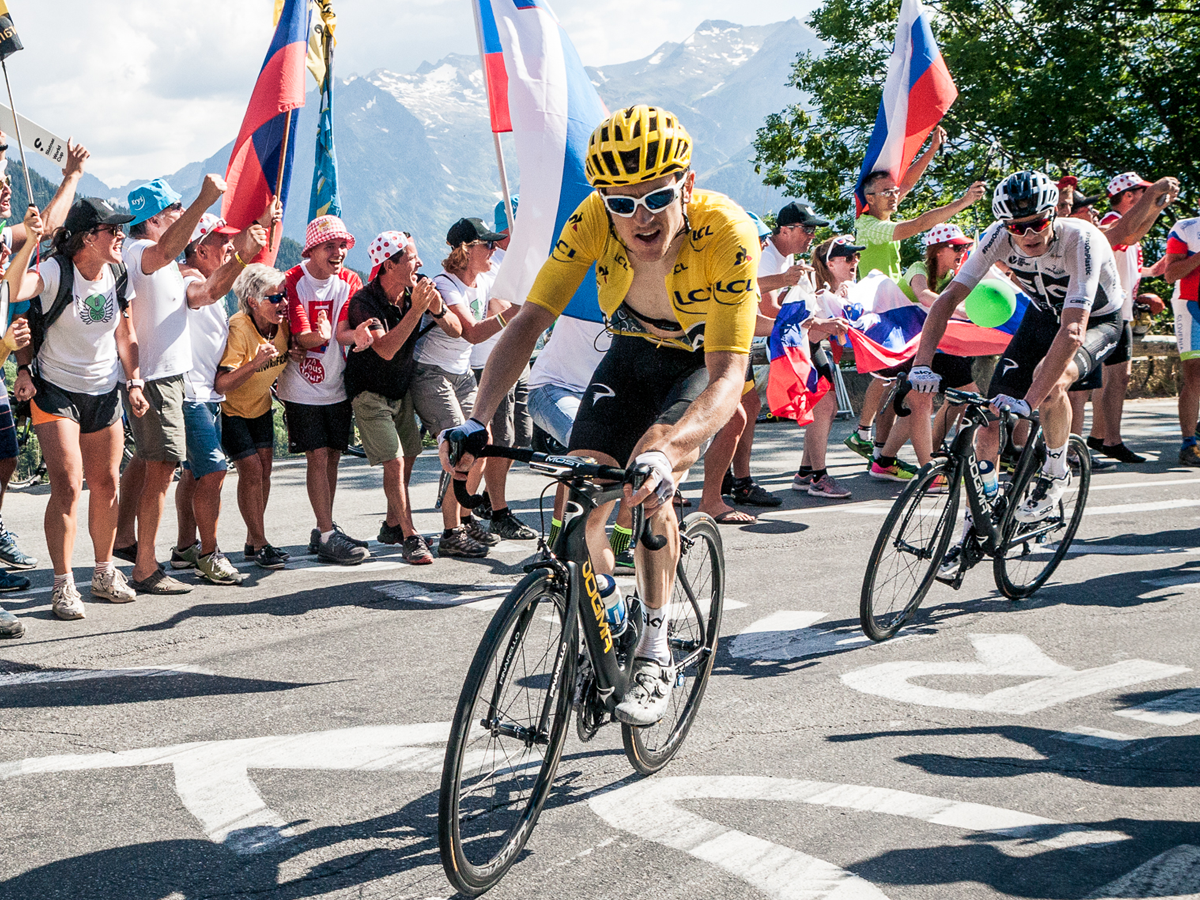
Published: June 2020
The Grand Tours in cycling are the three major professional cycling stage races: the Giro d'Italia, the Tour de France and the Vuelta a España. Together they are known as the ‘Grand Tours’. All the Grand Tours follow the same format: a three-week bike race with daily stages covering a variety of terrain - flat, rolling and mountainous - and a couple of rest days thrown in for good measure.
The Grand Tours are the truest test for the best all-round riders in the pro peloton. The rider finishing with the fastest cumulative time across all the stages wins the overall title, also known as the ‘general classification,’ and wins the relevant race winner’s jersey - yellow for the Tour de France, pink for the Giro d’Italia and red for the Vuelta a España. As well as the overall title (the most prestigious) there are also classifications for the best team, the best young rider, the best climber and the rider who wins the most points across all the stages.
We’ve all got our own memories of the yellow jersey or maglia rosa but how well do you really know cycling’s biggest races? Here are 6 things you might now know about the Grand Tours.
Grand Tour wins vs nationality
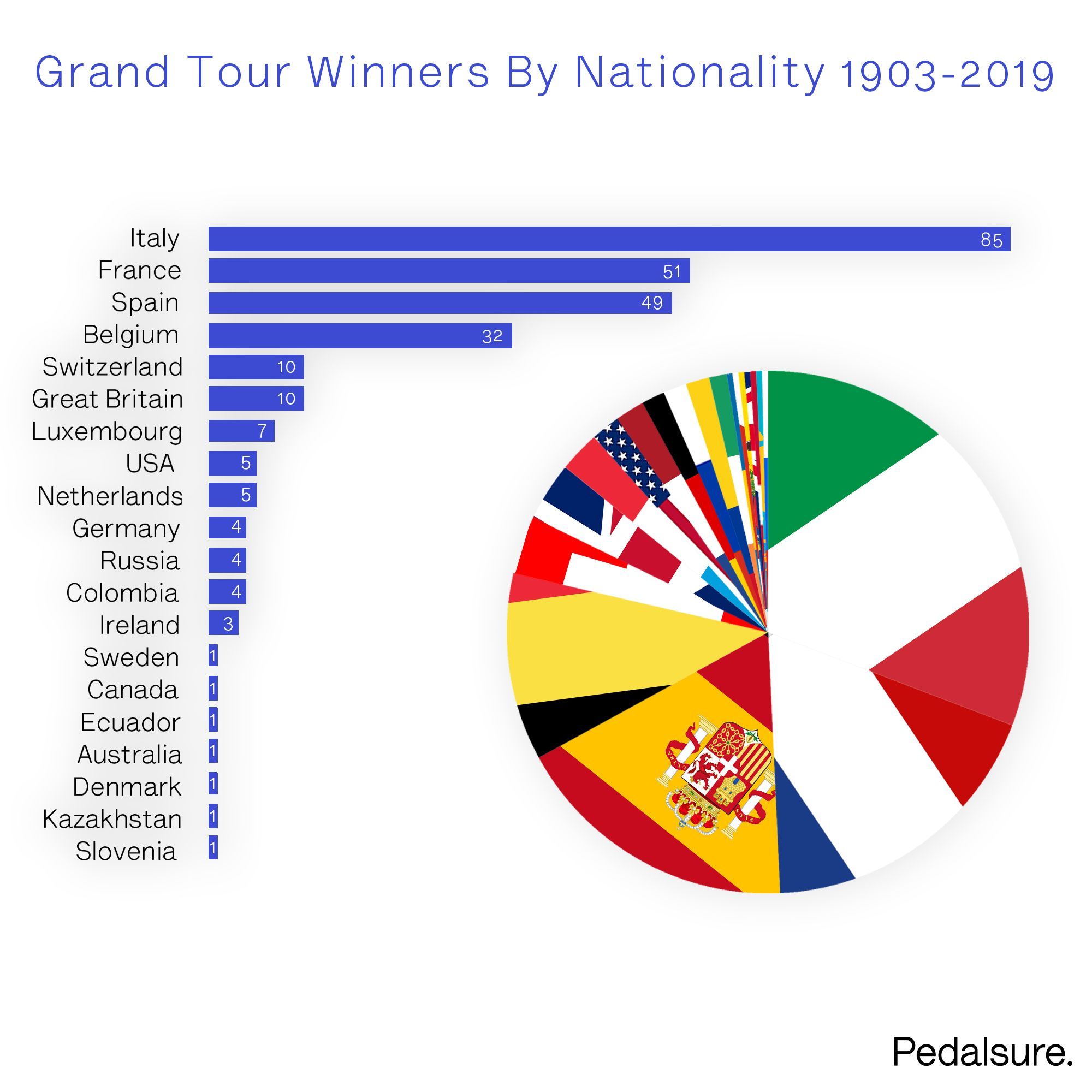
As you would expect, the three nations hosting the Grand Tours are pretty dominant when it comes to wins at the major races in the cycling calendar, with Italy topping the tally with 85 wins across all 3 Grand Tours, followed by France and Spain.
The last Italian to win a Grand Tour is the ‘Shark of Messina’, Vincenzo Nibali, who last won the Giro d'Italia in 2016. In recent years we have seen the total dominance of Team Sky (now Team INEOS) on the top step of the podium with British riders Bradley Wiggins, Chris Froome, and Geraint Thomas. But with the emergence of a highly talented crop of young riders, including the likes of 2020 winner Tadej Pogacar, the Belgium Remco Evenepoel and the ever-impressive Primoz Roglic, it looks like it's all change at the top of cycling's most prestigious podium.
How much do the pros get paid?
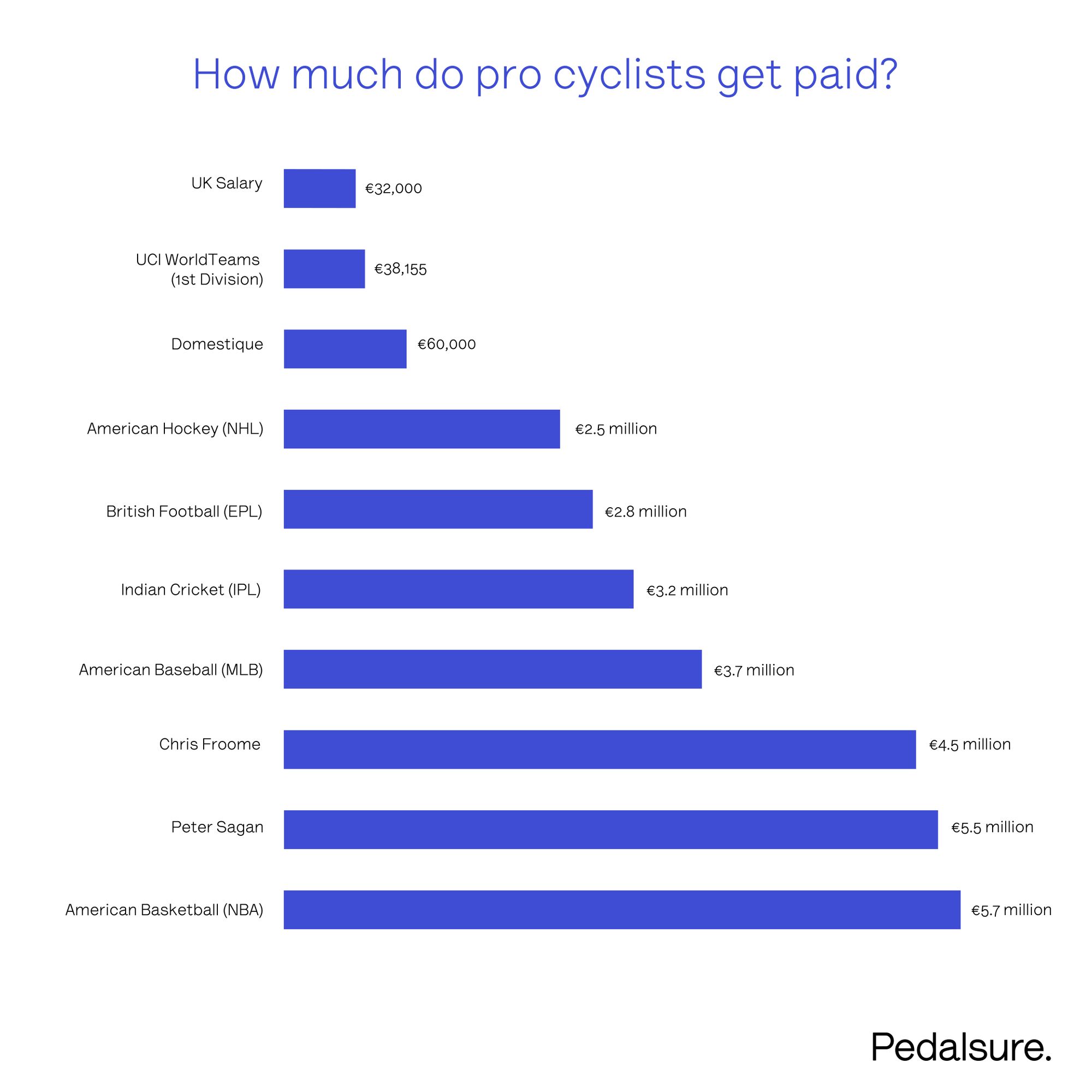
How much do Grand Tour riders get paid? We know pro cyclist salaries are on average significantly lower than other sports, but some superstar cyclists can earn as much as the very best paid footballers or basketball players. Peter Sagan is thought to earn around €5.5 million a year at Bora-Hansgrohe and seven-time Grand Tour winner Chris Froome pocketed in the region of €4.5 million each year when he rode for Team Ineos. Despite coming back from a career-threatening injury and with age catching up, his contract at new team Israel Start-up Nation is estimated at a whopping €5.5 million a year!
They are the exception rather than the rule, though. Most pro cyclists at World Tour level are on significantly less and while the very best domestiques (the likes of Wout Poels and Luke Rowe) may earn north of €1 million each year, most are likely to be on contracts worth €100,000-300,000 a year. The UCI sets a minimum annual salary requirement of €38,155 for men’s World Tour teams.
Grand Tour team budgets
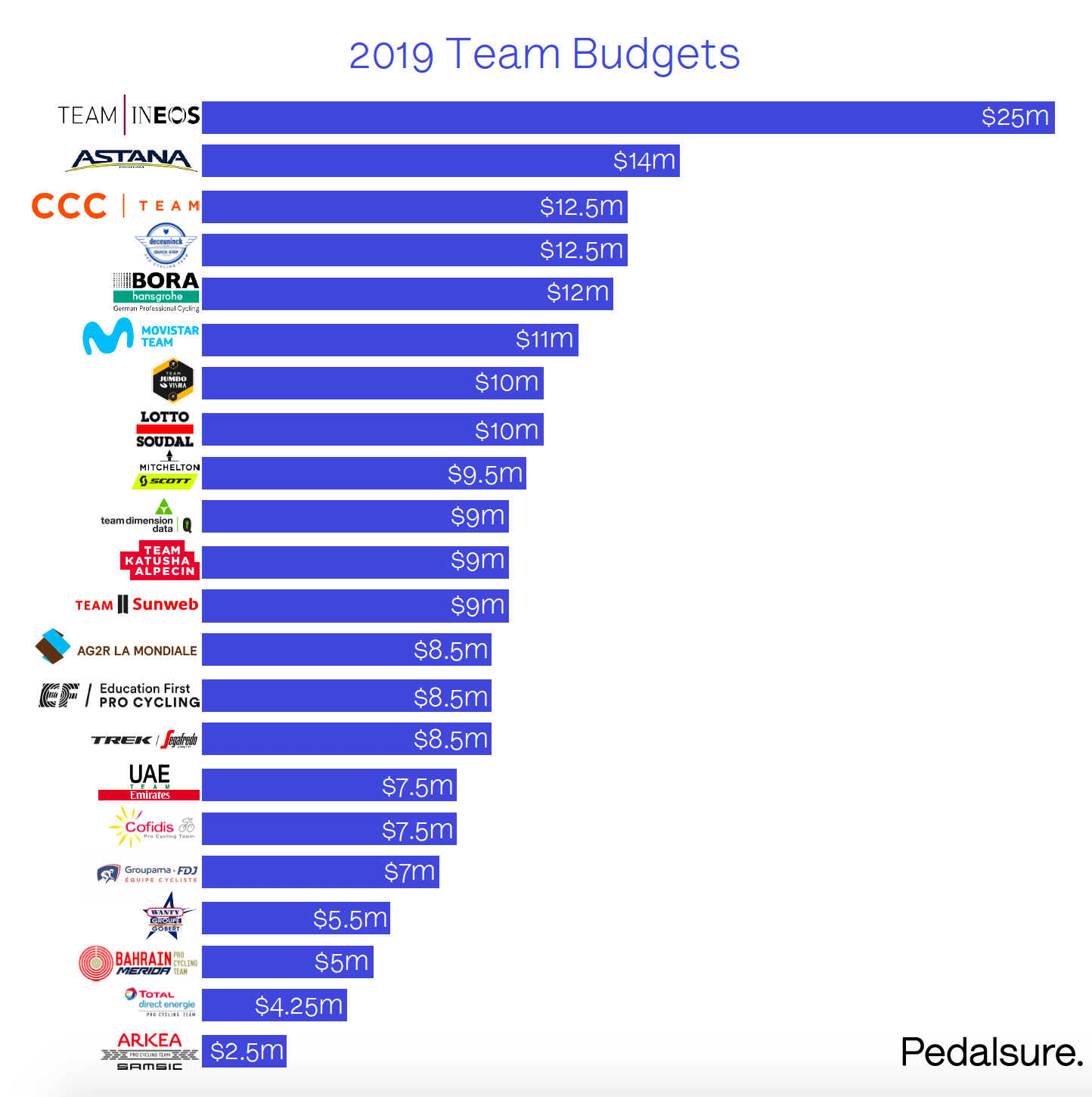
How big are the budgets of Grand Tour teams? INEOS remain the team with the deepest pockets, by quite some margin. Backed by British billionaire, Sir Jim Ratcliffe, the team’s budget is at least $10m more than their closest rivals and it’s difficult to argue that all that money hasn’t had a significant bearing on their results over the last eight years. The contrast is stark when you consider that even well-established teams like Trek-Segafredo and UAE Team Emirates are making do with budgets around 30% of the size of INEOS. Time for a fairer distribution of funds?
Which bike brand has been the most dominant at the Grand Tours?
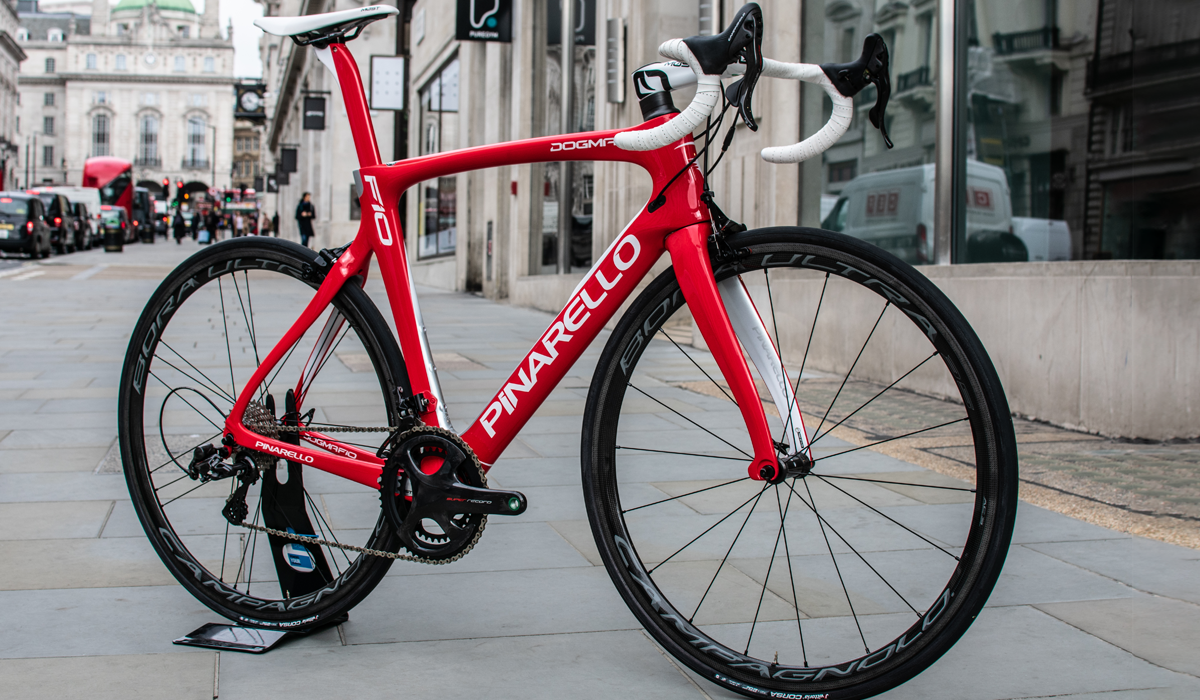
When it comes to Grand Tour-winning bikes, there’s one brand that has reigned supreme over the last 30 years. 26 of the 75 Grand Tours over the last 30 years have been won by a cyclist riding a Pinarello bicycle, largely thanks to the dominance of the likes of Team Sky and Banesto in the 1990s. A trio of american brands follow, with Specialized, Trek and Cannondale all winning their fair share of Grand Tours. Spanish brand BH proudly has three Vuelta a España wins, helping them scrape into the top 10.
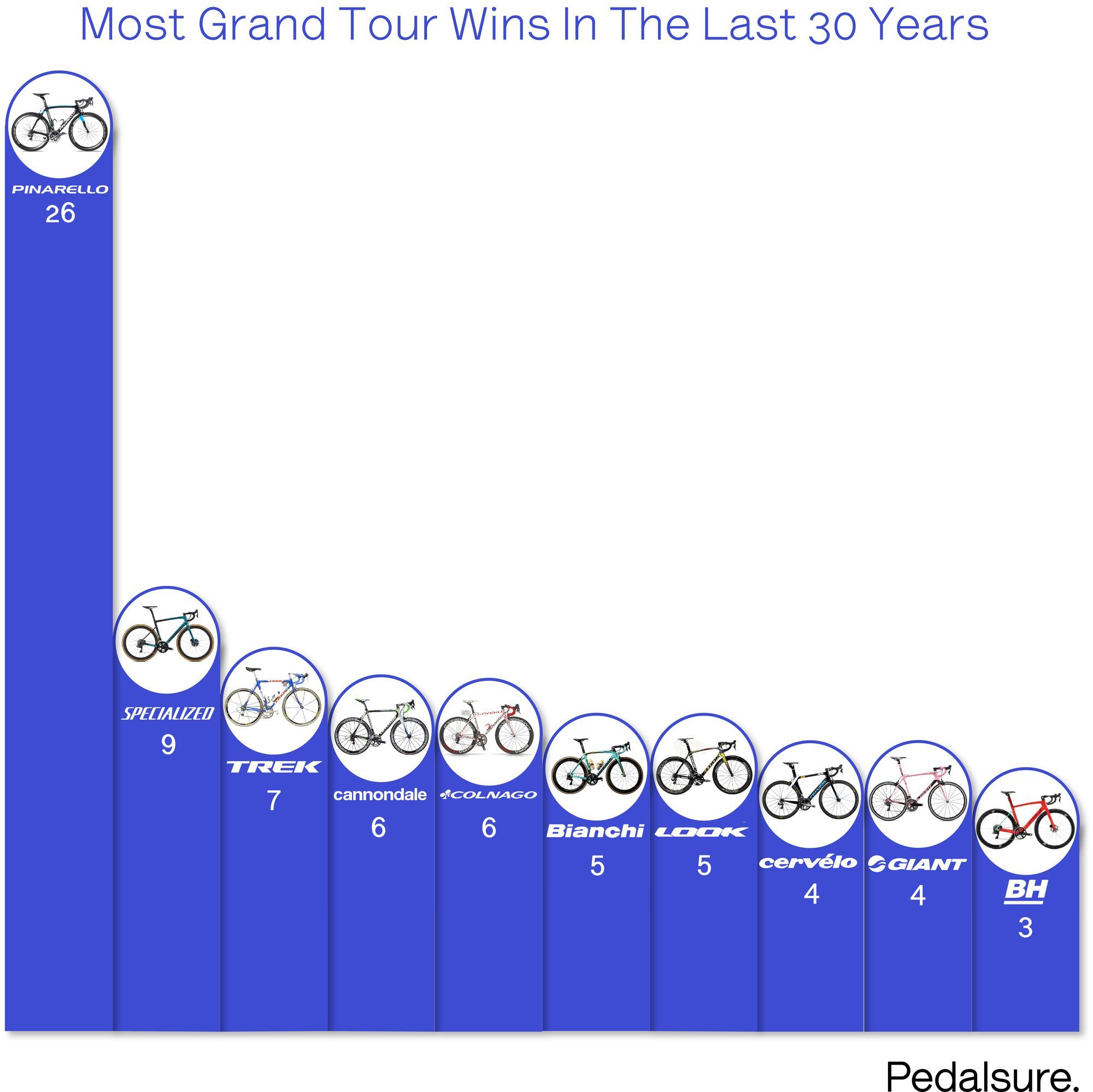
Which groupset has won the most Tour de France titles?
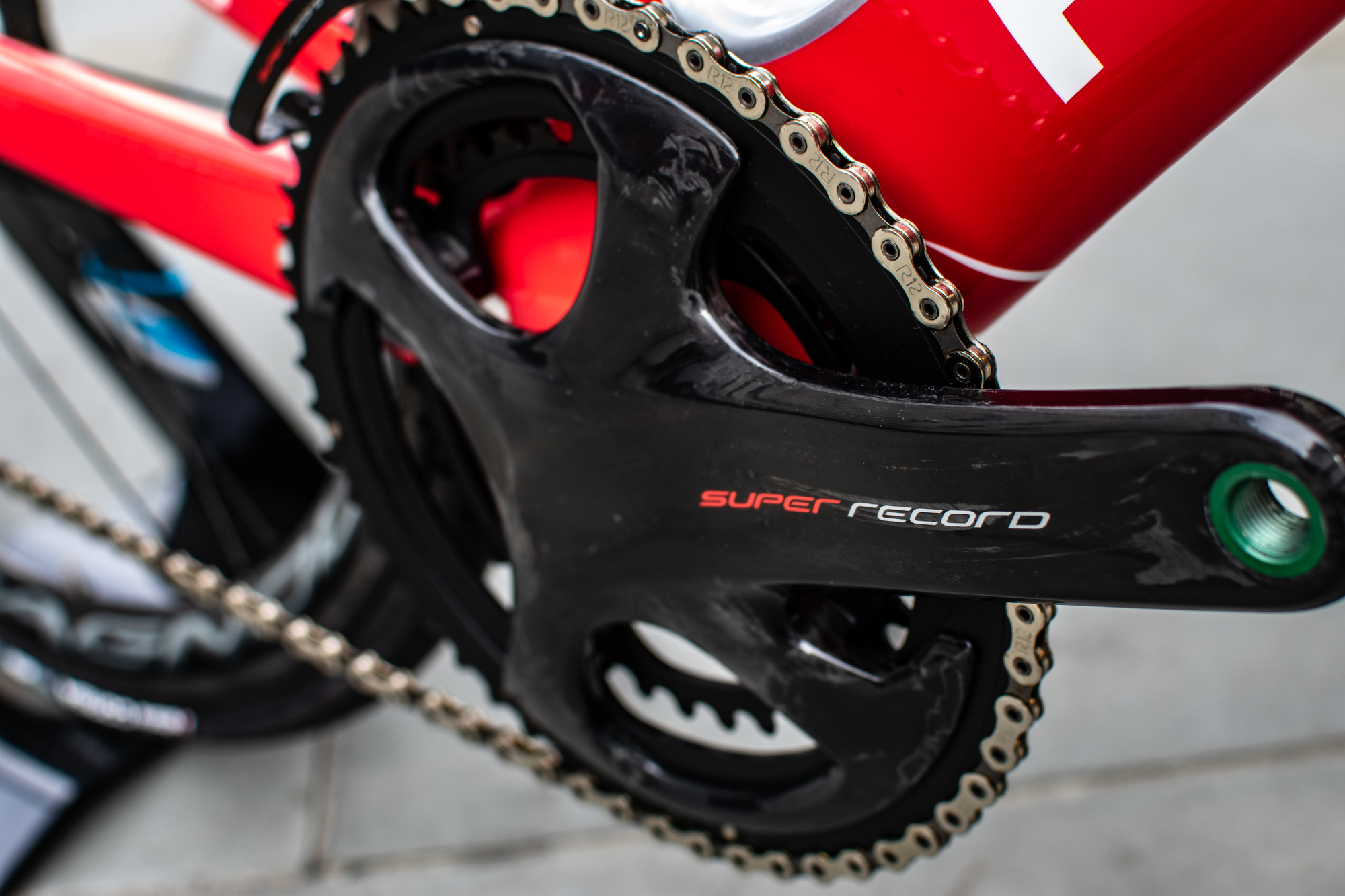
These days the ‘big three’ dominate when it comes to bicycle groupsets: Shimano, SRAM and Campagnolo. In fact, no current World Tour team uses a groupset from outside of these three manufacturers. Of the Men’s teams, 14 use Shimano groupsets, 3 use Campagnolo and 2 prefer SRAM.
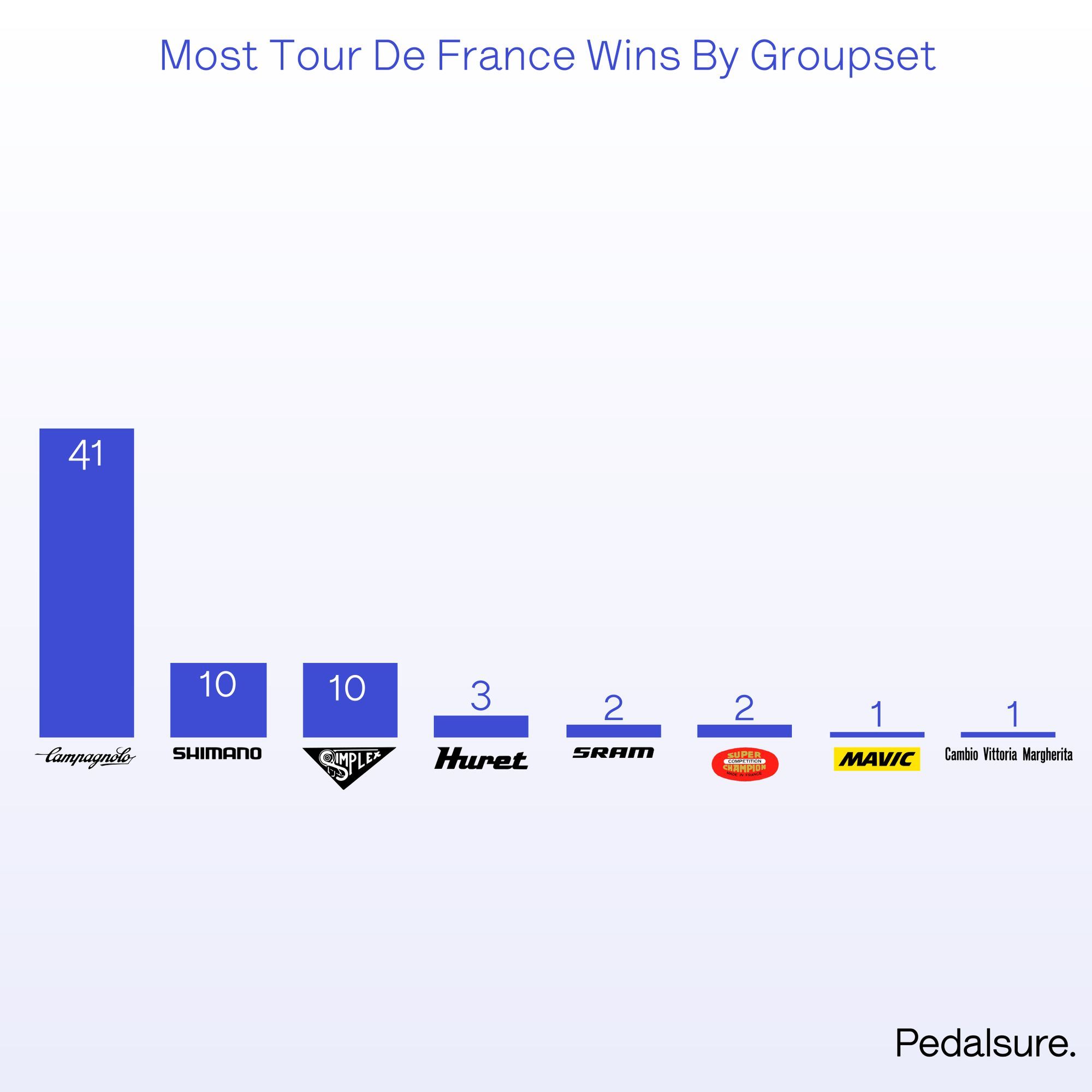
But which groupset has won the most Tours de France? There’s really only one winner here. Campagnolo has won a total of 41 Tour de France races in the history of the race (now 42 with Tadej Pogacar's win in 2020). Some of this can be put down to Campagnolo starting out in 1933 while Shimano started producing groupsets in the 1980s. The last winner to win with Campagnolo was Tadej Pogacar in 2020. The last SRAM winner, one of only two, was Andy Schleck in the 2010 Tour where he finished second behind Alberto Contador, but was retroactively awarded the general classification after the Spaniard was stripped of his title following a positive test for a banned substance. There’s also a few gems on that list. Who knew Mavic, famous for their wheels these days, used to make groupsets? And don’t forget Simplex, one of the pioneers of derailleurs and components. The now defunct French brand won 10 Grand Tours in total.
Tour de France average speeds
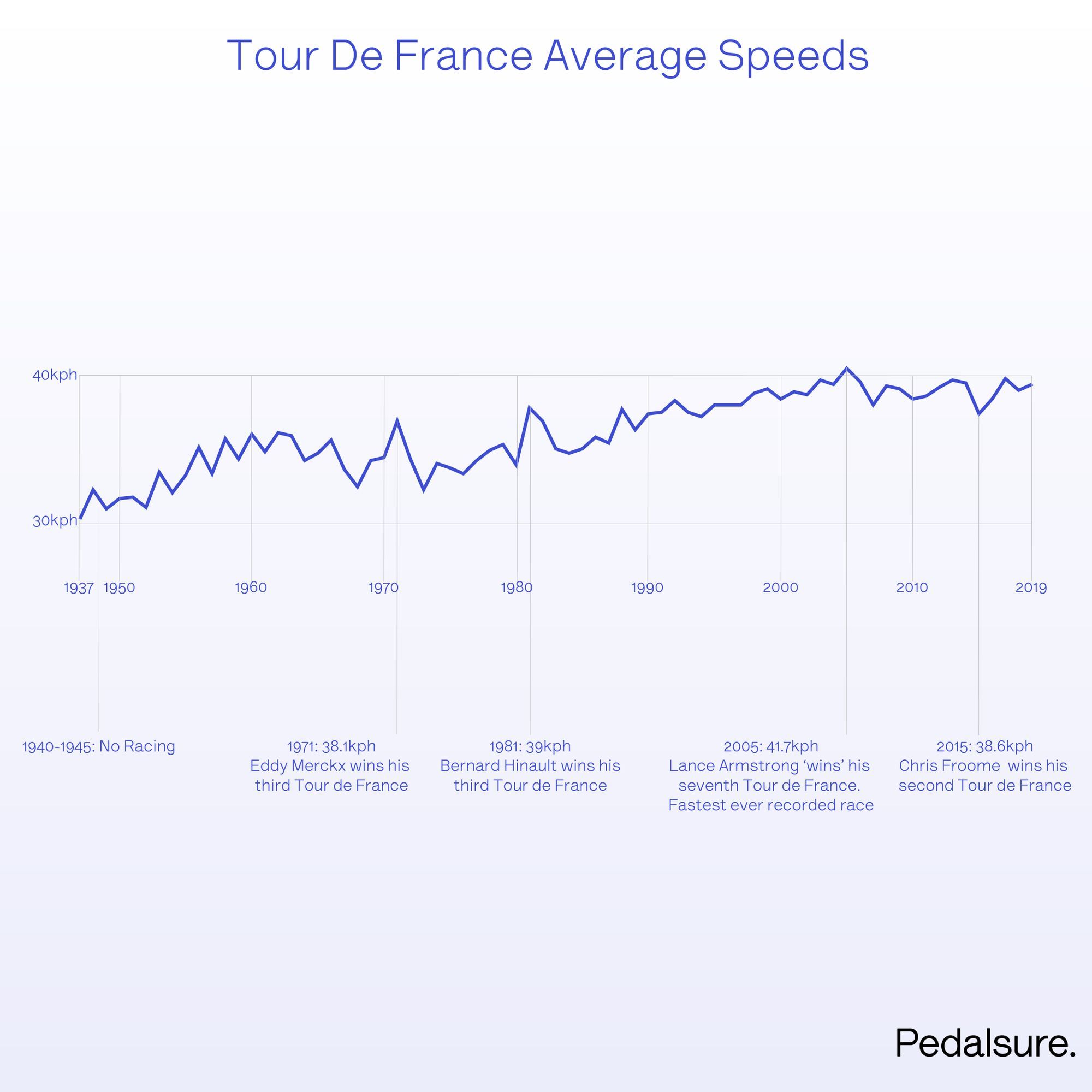
Average speeds at the Tour de France have always been an interesting topic in professional cycling. Here we look at the average speeds during the race’s history. The fastest ever race took place in 2005, at the height of the Lance Armstrong era where the American ‘won’ his seventh overall title. The average speed was a mind boggling 41.7kph over the 3 weeks of racing.
With advances in aerodynamics, weight and technology we can expect the races to be getting faster year after year but there are a few noticeable spikes through the years where the speed has increased significantly.
In 1971 Eddy Merckx won his third Tour de France with an average speed of 38.1kph, taking home the points and combativity jersey at the same time. In 1981, Bernard Hinault also won his third Tour with an average speed of 39kph. Another noticeable year is 2015, where Chris Froome won his second ever Tour de France and the average speed was much lower than the years around it, with a speed of just 38.6kph.
So there you have it. Some facts to digest and share about the biggest races in the cycling calendar.
